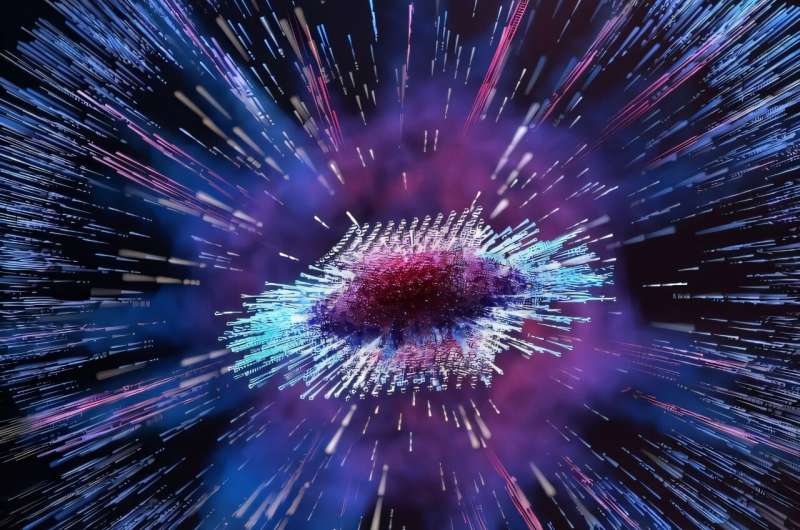
November 18, 2024 by National Taiwan University
Collected at: https://phys.org/news/2024-11-method-quantum-gas.html
Cooling atomic gases to the quantum regime often involves time-consuming steps. Electromagnetically induced transparency now achieves quantum degeneracy with high efficiency.
Quantum gas is a novel, non-classical state of matter, alongside gas, liquid, solid, and plasma states. In recent years, quantum gases have played a crucial role in the development of quantum science and technology, with many breakthroughs relying on experimental advancements in quantum gas studies.
The condition for a regular gas to transition into a quantum gas is when the de Broglie wavelength of individual atoms exceeds the atomic spacing, a transition that can be facilitated by cooling, which increases the wavelength of matter waves.
Since Nobel laureates Prof. Eric Cornell and Carl Wieman first observed quantum gases experimentally in 1995, all methods for creating quantum gases have depended on evaporative cooling, similar to cooling hot water by allowing it to evaporate at room temperature. However, this cooling method is inefficient and requires time for atomic collisions to occur.
In a recent study published in Nature Physics, a quantum science research team led by Associate Professor Shau-Yu Lan at National Taiwan University’s Department of Physics demonstrated an exceptionally efficient method for producing quantum gases.
This method involves trapping atoms in a three-dimensional optical lattice created by laser interference and employing electromagnetically induced transparency (EIT) along with adiabatic expansion to rapidly cool the atoms, achieving nearly 100% efficiency with a speed roughly 100 times faster than conventional methods. This innovative technique has significant potential to enhance applications of cold atom platforms in quantum sensing and quantum computing.
Additionally, Professor Lan’s team observed a phenomenon in the generated quantum gas resembling a supernova explosion, termed a “bosenova” explosion. This holds substantial implications for quantum simulation and many-body physics research.
The image above illustrates the bosenova collapse of the quantum gas, where the central part represents the quantum gas formed within a three-dimensional optical lattice via electromagnetically induced transparency and adiabatic expansion techniques. After the bosenova collapse, atoms collide and emit a large quantity of atomic jets, forming a shell-like structure.
More information: Mingjie Xin et al, Fast quantum gas formation via electromagnetically induced transparency cooling, Nature Physics (2024). DOI: 10.1038/s41567-024-02677-9
Journal information: Nature Physics

Leave a Reply